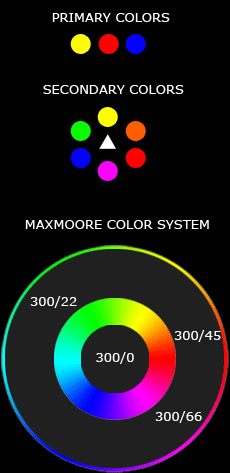
Coloration Tips & FAQ
- max moore
Coloration - max moore
Cream Developer - max moore
Bleaching Powder - max moore
Moisture Saver Mask - max moore
Perm - max moore
Straight&Neutralizer - max moore women
Shower Gel - max moore women
Body Lotion - max moore women
Deo Spray - max moore men
Shower Gel - max moore men
Deodorant Stick - max moore women
Eau de Parfum - max moore women
Eau de Toilette - max moore men
Eau de Parfum - max moore men
After Shave
FAQ
- I have a perm or dry ends. Will that affect my hair color?
To prevent color from taking too much on those dry, porous areas, apply a little leave-in conditioner to the dry areas before applying color. It will ensure color is more even. - After coloring, how long should I wait to shampoo my hair?
We recommend waiting 24 hours after coloring before you shampoo your hair. When you do wash, use a mild shampoo and conditioner to gently cleanse and condition without stripping or dulling color. - I just colored my hair, but want a new look. How soon can I color again?
We advise you to wait approximately for 4 to 6 weeks before reapplying color to your hair. - Should I do anything to prepare for coloring my hair?
Make sure you perform an allergy test two days before coloring. You must do this to make sure you won’t have a reaction to the product. - I have long hair, do I have to increase the quantity of haircolor product used?
If you have very thick or long hair it is advisable to use two cartons of identical haircolor to get the best result. - How can I remove the stains of haircolor on my skin?
If stains occur after coloring, wash immediately with a cotton pad soaked in soap and water. To prevent stains before coloring, apply Vaseline or lip balm around your hairline. - How do I protect my hair in summer months?
Hair is like your skin; it must be protected and looked after during exposure to the sun, sea water etc. - What do I do with the leftover product?
Discard any unused mixture as the container may burst.
Hair Color Basics
If you know the color wheel coloring becomes easy.
It may sound a bit odd but your hair is a mixture of 3 colors; red, yellow, and blue. These are the primary colors. Secondary colors are orange, green, and violet. If you look at the "wheel" a color opposite (directly across) will "negate" that color.

This means if your hair is an orange color - blue will make it a brown/black color. If you hair has a yellow tone, violet will cancel it out.
One of the most important elements of hair coloring is determining the hairs' "underlying pigment" (the hairs' natural color.) When you chose a color in a swatch book, your hair may not come out that color because of the underlying pigment in your hair.
Underlying color + Artificial color = Final result
Levels of Hair Color:
While “color” refers to the hairs’ underlying pigment, “level” is the lightness or darkness of the hair. It ranges from level 1 (darkest) to level 10 (lightest). Together, color and level form your hair color. For example, you could be a level 3 Gold (Dark Golden Brown) and your friend a level 3 Red (Dark Red). You would both be the same level of darkness but your colors will look very different on each. The same goes for levels; a level 6 Ash (Light Ash Brown) will look very different from a level 10 Ash (Light Ash Blonde).
Think of it as an algebraic equation: Level + Color = Hair Color
1=Black
2=Very Dark Brown
3=Dark Brown
4=Brown
5=Medium Brown
6=Light Brown
7=Dark Blonde
8=Light Blonde
9=Very Light Blonde
10=Light Platinum Blonde
How it Works:
Before any permanent color can be deposited into the hair shaft, the cuticle, or outer layer, must be opened.
The insoluble formula then reacts with the cortex, or middle layer, to deposit or remove the color. The color is available in a variety of forms: creams, gels or tubes, or shampoos.
These will not permanently change the hair color until they are part of an oxidation chemical reaction.
The Oxidizing Agent or Developer is hydrogen peroxide in one of various forms and strengths. lt is the catalyst or cause of the chemical reaction which allows the formula to permanently alter the hair's color. The strength of the developer - is determined by the desired results directions.
Too much developer and the color may not have good highlights, cover poorly, not lift to the correct level and fade more quickly.
Hair Coloring Tips
- Shampoo that’s made for color treated hair keeps your hair color soft and natural looking. Regular shampoos can strip color and natural moisture from your hair.
- Install a water filter for your shower or bath. Besides frequently being treated with chemicals, tap water coming through old plumbing contains undesirable elements like rust that leave your new hair color flat and dull looking.
- Deep condition regularly – at least every two weeks – to restore moisture and shine to color treated hair. As roots grow out, a color enhancing conditioner will help your natural hair color blend with your color treated hair.
- After shampooing, always blot your hair dry. Don’t rub hair dry or wrap it in a tight turban. When using a blow dryer, dry your head– not your hair. Over drying hair strips it of moisture and also results in static.
- Never use a brush on wet hair. Work through tangles with a wide tooth comb, starting with the ends and moving to your scalp.
- Conditioners that you leave in your hair often contain sunscreen and help protect your hair color from fading.
- Wetting your hair with bottled spring water helps to shield it from the harsh swimming pool chemicals.
Types of Hair Coloring Techniques
- Highlights: Probably one of the first innovations in hair coloring, highlights brighten and add shine. Highlights work best in warm shades of gold, honey, amber, and reds.
- Twilighting: When you want a lighter hair color to show a subtle change, twilighting is the answer. Twilighting tones down too-bright hair colors by adding a few darker tones. Twilights are closely related to lowlights.
- Lowlights: A hair coloring technique that adds real depth to hair color. Like twilights, low lights add darker tones and soften the look of over-lightened hair or add dimension to hair color that looks flat.
- Veiling: Brightens and enhances old flat hair color by applying a semi-permanent glaze in a richer tone over a permanent shade.
- Chunking: Takes large, random sections of hair and infuses them with new color. Chunking is a hair coloring technique that gives dramatic impact to your hairstyle, often by adding bright, trendy colors to natural hair color.
